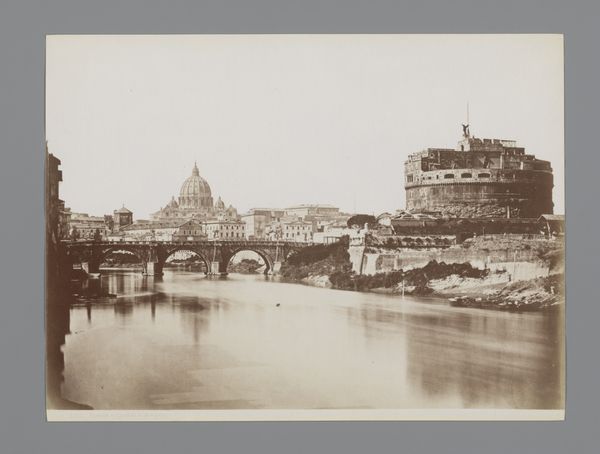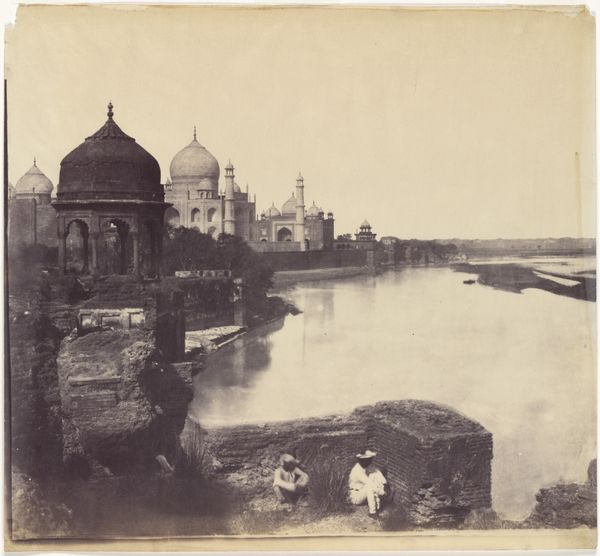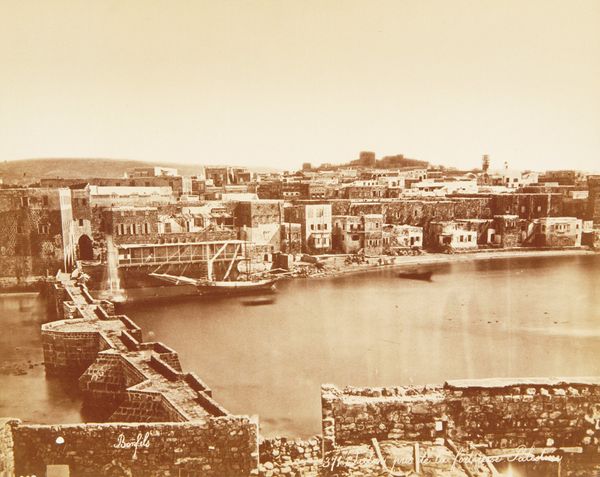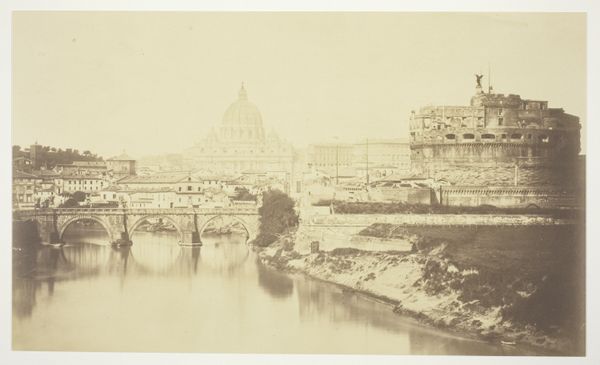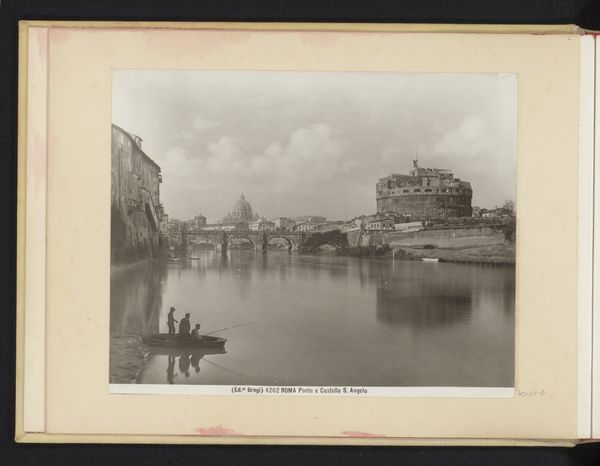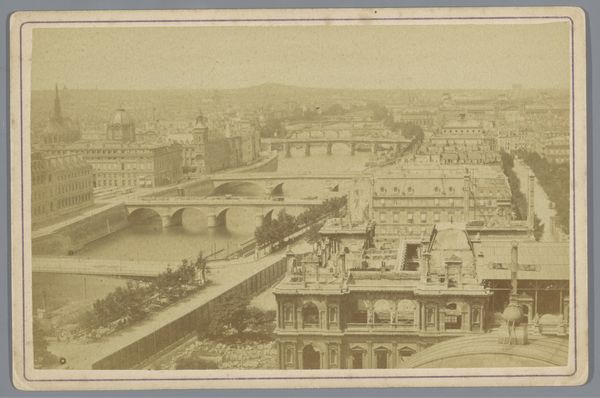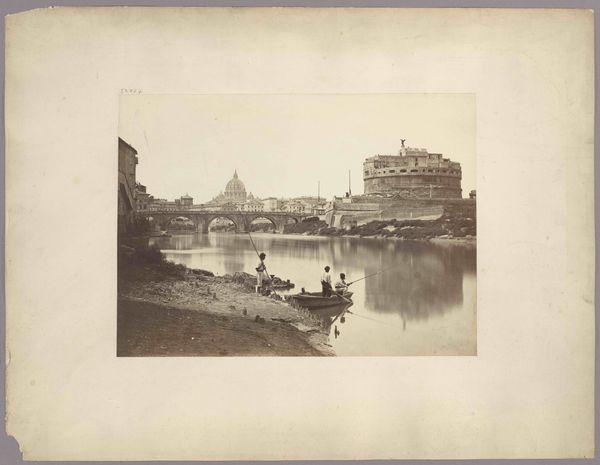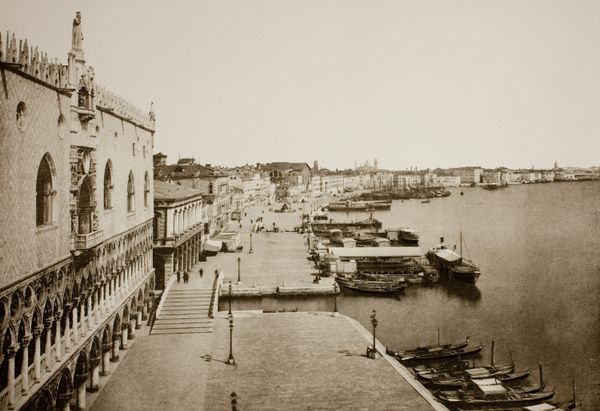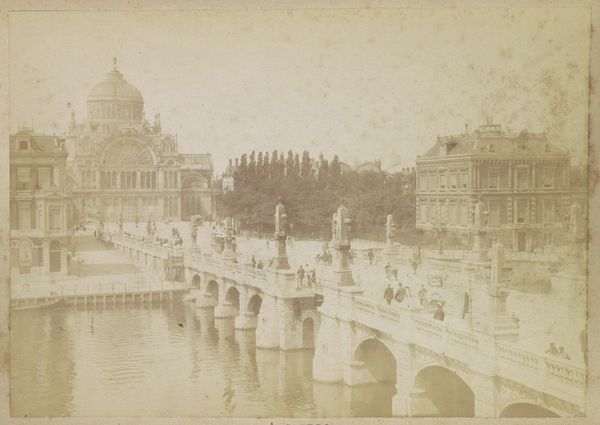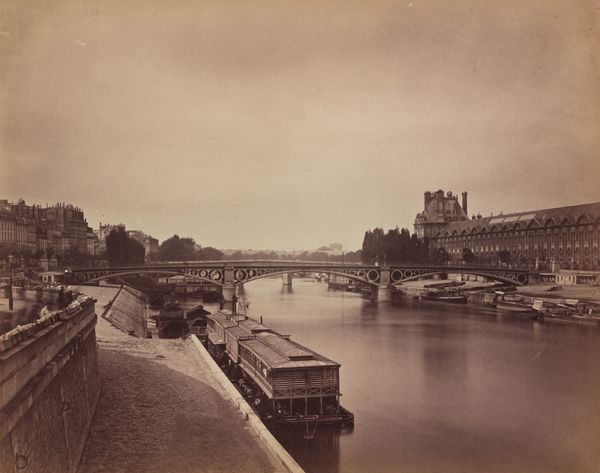
photography, albumen-print
#
portrait
#
cityscape photography
#
greek-and-roman-art
#
landscape
#
historic architecture
#
photography
#
romanesque
#
street photography
#
cityscape
#
albumen-print
Dimensions: image (visible): 40.01 × 54.61 cm (15 3/4 × 21 1/2 in.) framed: 75.57 × 86.36 × 1.91 cm (29 3/4 × 34 × 3/4 in.)
Copyright: National Gallery of Art: CC0 1.0
Editor: This albumen print from around 1870, titled *The Tiber by the Castel Sant'Angelo*, by Gioacchino Altobelli, feels both immediate and distant. It's a seemingly casual moment captured against an imposing historical backdrop. What story do you think this photograph tells? Curator: It tells of the way the old and the new always intertwine, how modern life continues against the backdrop of powerful institutions, the physical embodiments of power. The Castel Sant'Angelo itself was built as Hadrian's tomb! Then transformed into a papal fortress, its significance and meaning have shifted throughout the centuries. Altobelli is composing the image here so we see these leisure seekers right alongside it; their activity framed by this structure’s loaded history. Don't you agree it prompts consideration on what's changed, and crucially, what remains the same? Editor: That’s interesting! The layering of histories within the frame definitely makes you think about continuity and change. It seems he is purposefully contrasting those two states. I suppose the very act of photographing this scene, with the relatively new technology of photography, is an example of embracing that change. Curator: Precisely. Altobelli would have understood the revolutionary aspect of photography and its potential to democratize art. He and others understood what it meant for visual culture. So the way he carefully positions this photograph allows him, in one way, to compete against painted landscapes. Editor: So, Altobelli is deliberately making a statement about art’s evolving role within society using Rome’s history and current leisure practices as the focal points? It’s a fascinating social commentary wrapped in a scenic view! Curator: Exactly! The artist is playing on that interaction, or even that tension, between traditional authority, expressed by that imposing architecture, and everyday existence and what photography meant to those in both spaces. What an image of Italy communicates both locally, and to potential tourists wanting a view that captured all this in one. Editor: This has really opened my eyes to the complexities of this photograph. It's far more than just a pretty scene, it’s a reflection on power, progress, and the public’s engagement with both! Curator: Indeed. The photographer uses the lens to comment, to capture a moment loaded with these contextual dynamics. Something we, perhaps, initially overlook, looking at the picture now.
Comments
No comments
Be the first to comment and join the conversation on the ultimate creative platform.
